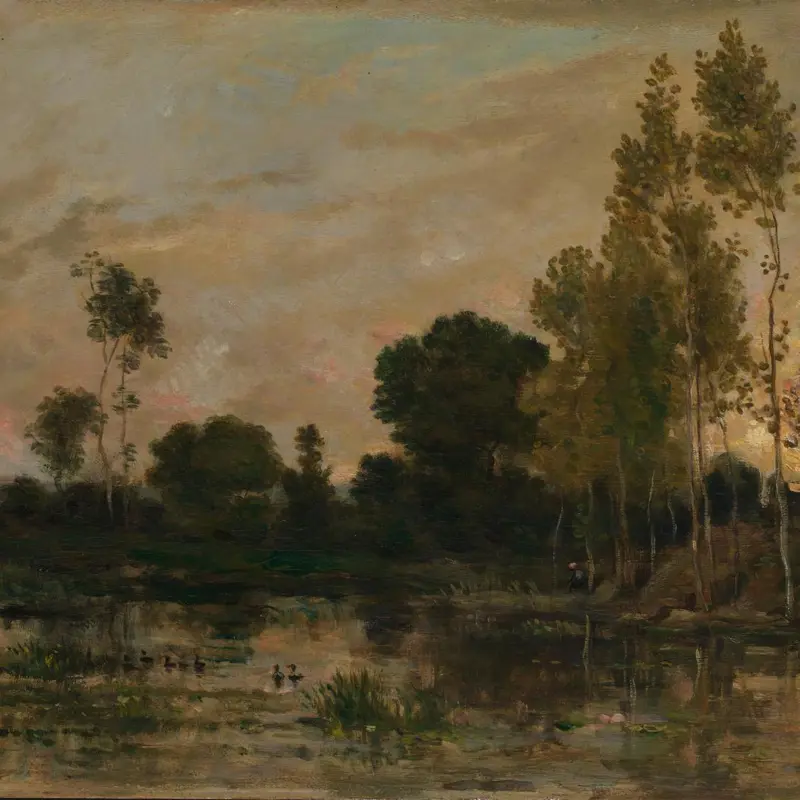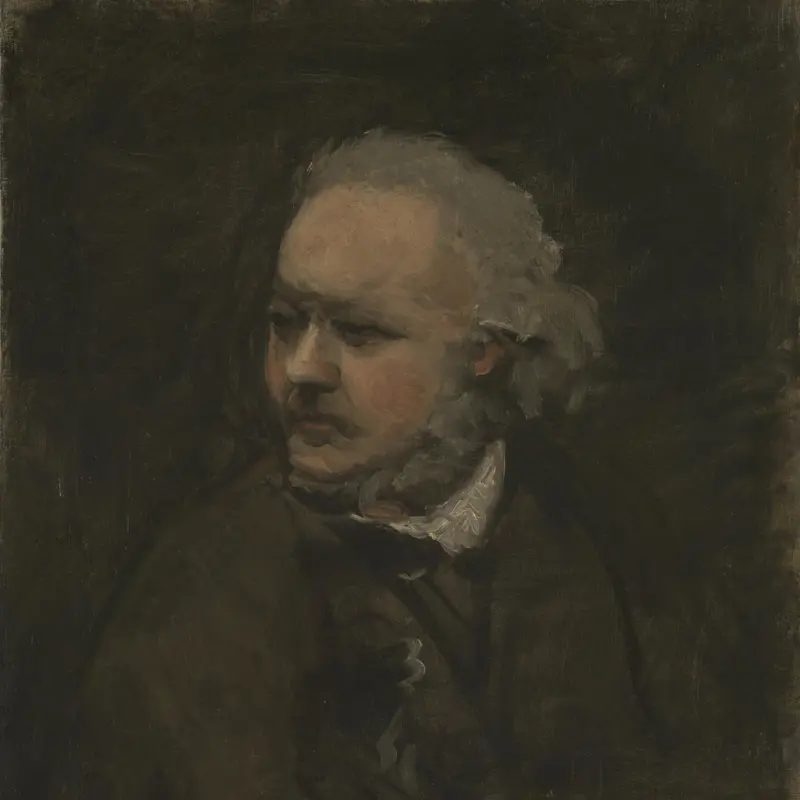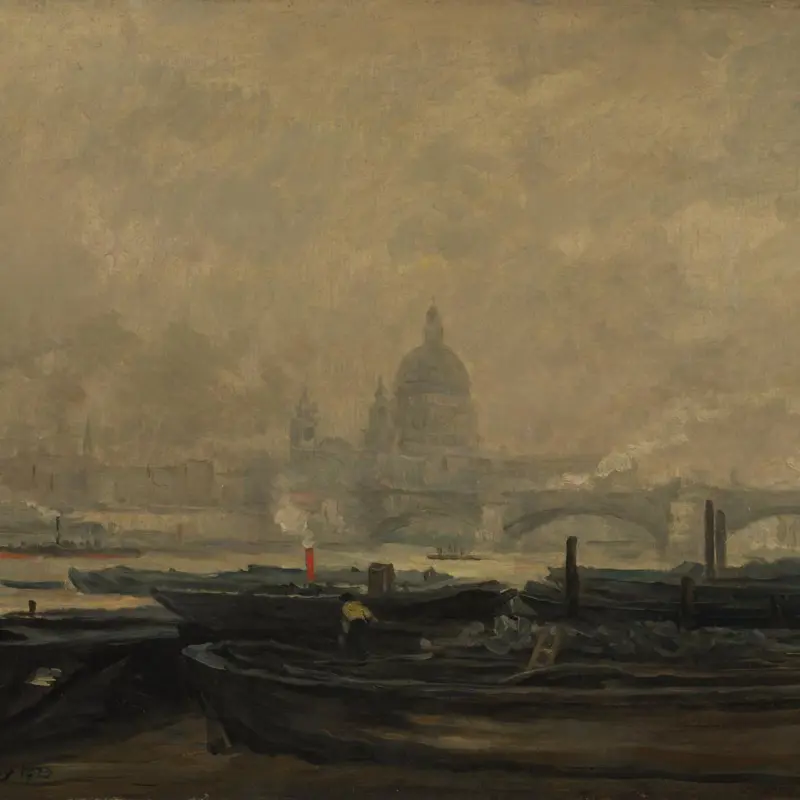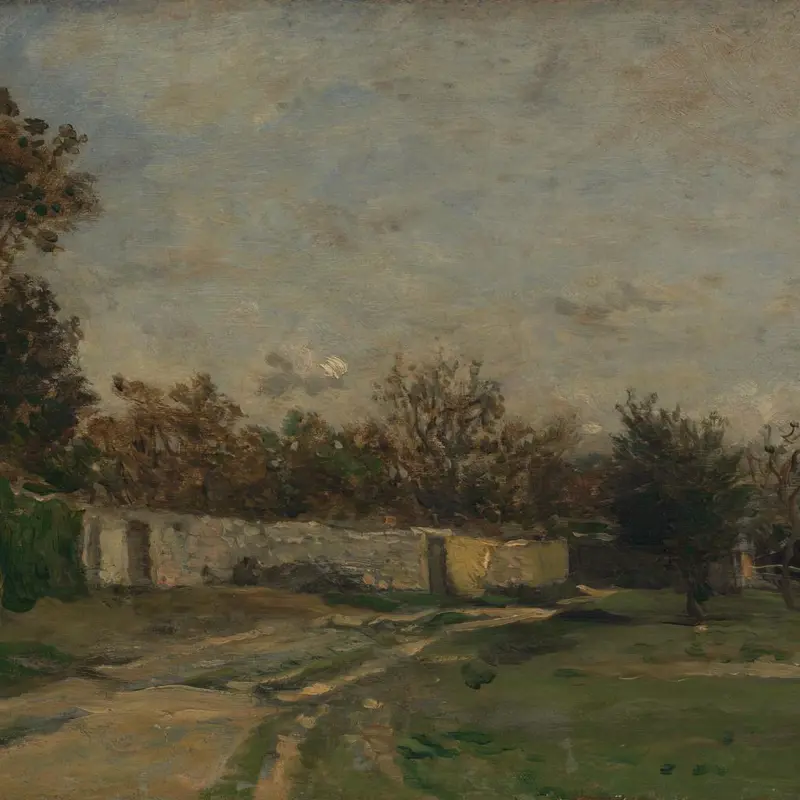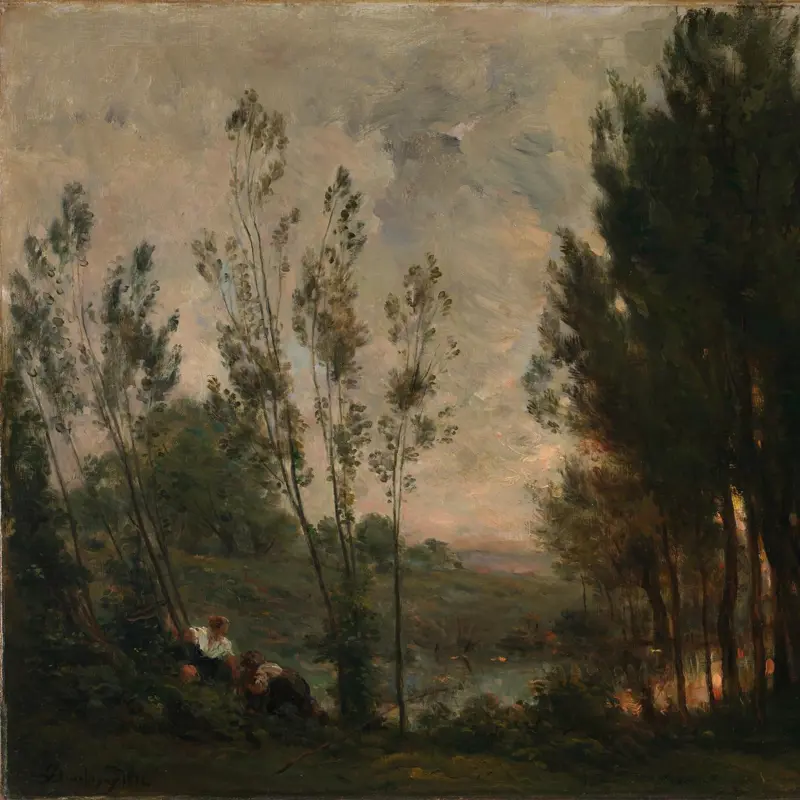Daubigny initially trained with his father, the classical landscape painter Edmond-François Daubigny (1789-1843). Soon after he was apprenticed to an engraver, and he was later to publish two albums of etchings in 1850 and 1851. During this period he sketched in the environs of Paris and the Forest of Fontainebleau, and in 1835 he travelled to Italy. In 1838 he made his debut at the Paris Salon, where he regularly exhibited landscapes for the rest of his life. He first met Corot in 1849, from which time he placed increasing importance on landscapes painted from nature. In 1857 he acquired his studio boat, nicknamed 'Le Botin' (Little Box) in which he explored the rivers Seine, Marne and Oise. He settled in Auvers-sur-Oise in 1860 but continued to travel around France. With increasing years his landscapes became more rapidly and freely painted. His interest in painting in the open air was an important example to the Impressionists. Claude-Oscar Monet was inspired by his example to acquire a studio boat in 1872.
Charles-François Daubigny
1817 - 1878
Works by Charles-François Daubigny
(Showing 6 of 8 works)
The stretch of water in the foreground almost certainly lies near to Daubigny’s home in Auvers-sur-Oise. Its surface is covered with vegetation, including clumps of reeds and water-lilies. A woman in a red and white hat sits at the far side, under a clump of alders. This is an evening scene, with...
Not on display
Portraits by Daubigny are quite rare, as he was primarily a landscape painter who was closely associated with the Barbizon group. He and Daumier, who was an artist, printmaker and caricaturist, had been friends since meeting in Paris in the 1840s. This portrait may have been painted between 1867...
On display elsewhere
On the left a rocky hillside leads down to grassy pasture and a river. Cart tracks run through the pasture from the front edge. Cows graze, watched by a dog, and a lone washerwoman kneels on the right bank of the river, her white linen visible in the water. The river is the Cure in the Morvan reg...
Not on display
This peaceful river landscape depicts the Oise near the village of Auvers, where Daubigny built a home in 1860. At the far right, mostly hidden by a clump of trees, is Daubigny’s studio boat, nicknamed Le Botin (Little Box). It was originally a ferry boat which the artist had converted with the...
Not on display
The shadowy dome of St Paul’s Cathedral is viewed from the south bank of the Thames. Just to the front of the cathedral the newly built Blackfriars Bridge straddles the river; behind it a train, invisible but for its plume of smoke, passes over Blackfriars Railway Bridge. The leaden sky is heavil...
Not on display
A path runs along a white wall with a grassy common to the right. The wall features two pale brown gates. Trees behind the wall suggest a garden or orchard. The tonality is light, with the pale grey paint of the wall overlaid with small, square touches of creams, yellows and pinks, giving a sense...
Not on display
The washerwoman at the right, a common motif in Daubigny’s river scenes, dips some blue cloth into the water. Close inspection reveals that she is kneeling in a box, commonly used by laundresses at the time to keep themselves dry and relatively comfortable. To the front of her the water is punctu...
Not on display
A wooded bank and lake open onto a vista of trees and pasture. At the left two boys are fishing. A fishing rod leans on the bank, and the right-hand boy is peering into a basket, perhaps at his catch. This purely imaginary scene is the last in a series of four versions of the same composition. It...
Not on display
You've viewed 6 of 8 works

